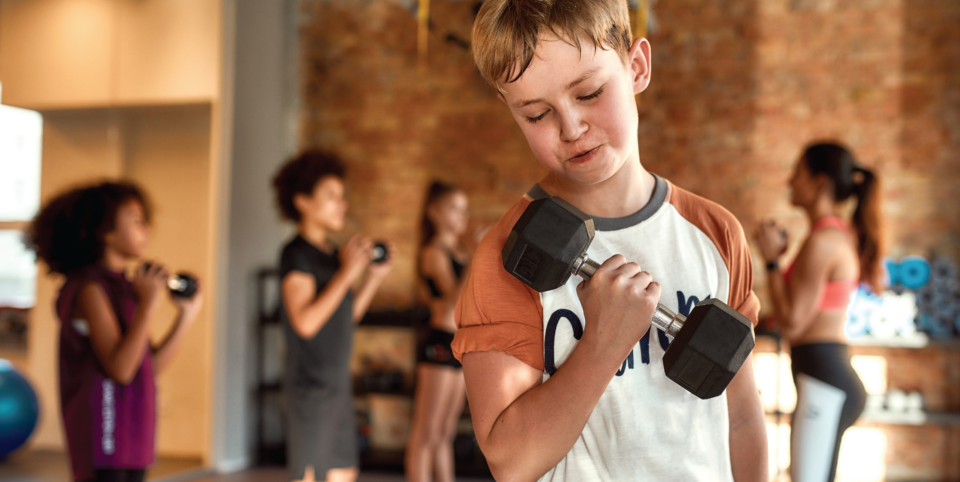Back when we were kids, strength training for kids didn’t often cross our minds. Lifting weights or performing any sort of resistance training was thought to cause injury to kids’ growth plates. After years of research and studies, experts have actually discovered the exact opposite.
“It is good and encouraged to participate in resistance training to improve balance and coordination,” says Kate Berz, DO, assistant program director at Pediatric Sports Medicine Fellowship; and Grant Poston, physical therapist I at the Division of Occupational Therapy and Physical Therapy at Cincinnati Children’s Hospital. “Powerlifting, maxing out and body building should be avoided until skeletally mature.”
But before your kids hit the weights, there are some rules that come along with it. First, it is recommended that kids begin a resistance training program gradually, especially if they are starting from scratch. It takes some time and practice to build these newfound skills.
“For example, increasing running mileage 10 percent per week until full volume is reached,” says Berz and Poston. “This helps avoid overuse injuries. Each kid is different, and this increase depends on where they are starting, their experience and what stage of growth they are in.”
Their growth says a lot about when they should start a strength training program and the amount of loads and repetitions they should be taking on throughout the week. Kids who have not hit puberty, for example, should not yet focus on strength training. Instead, they should focus more on technique. Once they hit puberty, they can slowly add on new exercises and increase weights/ repetitions to improve their fitness and keep them interested, says Marc Schneider, MD, orthopedics & sports medicine physician at The Christ Hospital Health Network.
“Prior to puberty, when hormone levels are relatively low, strength training can improve muscle tone, but won’t significantly increase muscle bulk,” explains Schneider. “As your child goes through puberty, strength training will actually cause the muscle to hypertrophy (bulk up).”
The goal of strength training prior to puberty is to gain coordination, balance and to develop foundational skills, adds Berz and Poston.
Benefits of Strength Training
So if you are wondering when it is OK for your kids to begin a strength training program, the answer is, there is no particular age that is the right age to start, according to Berz and Poston. However, your kids should be motivated to strength train on their own without adult pressure, should be able to follow directions and the goal is proper form and not heavy weights. In addition, your kids should be supervised by an adult or a certified strength and conditioning specialist (CSCS) or a certified personal trainer. From here, the benefits are endless and worth every squat and pushup.
“Regular participation in resistance training favorably affects overall health, reduces injury, improves motor skills and sports performance,” they continue. “Strength training helps with insulin sensitivity, cardiac function, positively affects bone health and is fun for kids to participate in together.”
Strength Training and Sports
If your kiddo is signed up for an upcoming sport, it’s important to prep them physically by participating in a strength training program taught at a local facility or have them partake in team conditioning. Always keep in mind that the ultimate goals are to have fun, exercise, gain skills and be with friends.
“The American Academy of Pediatrics has a recommendation for no more than one sport/ team per season, one to two days off from scheduled activity per week, three months off per year; hours of participation per week should be less than the child’s age,” says Berz and Poston. “We also recommend that a child only participate in one sport per day. Children should also have proper nutrition, proper sleep and proper hydration.”





